-
 Bitcoin
Bitcoin $85,034.7515
0.87% -
 Ethereum
Ethereum $1,878.5720
-0.11% -
 Tether USDt
Tether USDt $0.9997
-0.02% -
 XRP
XRP $2.1173
-2.71% -
 BNB
BNB $603.7936
-2.09% -
 Solana
Solana $125.8960
-2.16% -
 USDC
USDC $1.0000
0.00% -
 Dogecoin
Dogecoin $0.1717
-1.15% -
 Cardano
Cardano $0.6803
-0.05% -
 TRON
TRON $0.2371
1.16% -
 Toncoin
Toncoin $4.0680
-1.64% -
 Chainlink
Chainlink $13.6041
-2.67% -
 UNUS SED LEO
UNUS SED LEO $9.3977
2.15% -
 Stellar
Stellar $0.2673
-2.41% -
 Avalanche
Avalanche $19.4065
-1.12% -
 Sui
Sui $2.4228
0.28% -
 Shiba Inu
Shiba Inu $0.0...01239
-4.17% -
 Hedera
Hedera $0.1682
-1.91% -
 Polkadot
Polkadot $4.1064
-3.13% -
 Litecoin
Litecoin $82.6894
-3.10% -
 MANTRA
MANTRA $6.1952
-1.48% -
 Bitcoin Cash
Bitcoin Cash $306.4058
-2.56% -
 Bitget Token
Bitget Token $4.6047
-1.08% -
 Dai
Dai $1.0000
-0.01% -
 Ethena USDe
Ethena USDe $0.9999
0.02% -
 Pi
Pi $0.6782
-5.17% -
 Hyperliquid
Hyperliquid $13.4844
-1.67% -
 Monero
Monero $215.4922
-1.00% -
 Uniswap
Uniswap $6.1086
-1.70% -
 Aptos
Aptos $5.2965
-1.83%
What do the "blocks" and "chains" of blockchain refer to?
Blockchain uses cryptographically linked blocks to create a chronologically ordered, immutable chain of verified transactions. This decentralized structure, secured by hashing, ensures data integrity and resistance to tampering.
Mar 12, 2025 at 11:26 pm
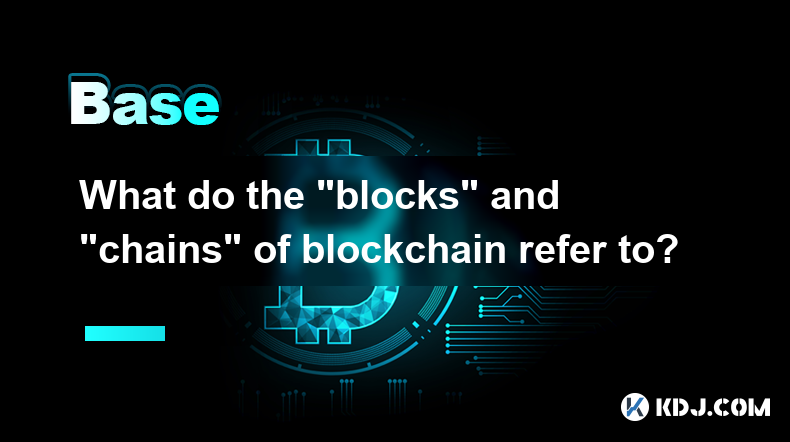
Key Points:
- Blocks: Data containers holding verified cryptocurrency transactions, bundled together and added to the chain. They have a limited size and are cryptographically linked to the previous block.
- Chains: A chronologically ordered, immutable sequence of blocks. Each new block added extends the chain, creating a permanent and verifiable record of all transactions.
- Hashing: A crucial cryptographic process linking blocks together and ensuring data integrity within the blockchain. Changes to any part of a block would invalidate its hash, making tampering immediately detectable.
- Decentralization: The distributed nature of the blockchain, where no single entity controls it, ensures its security and resilience against censorship or single points of failure.
What are "Blocks" in Blockchain?
In the context of blockchain technology, a "block" is essentially a container that holds a batch of verified transactions. Think of it as a digital ledger page. Each transaction within a block includes details like sender, receiver, and the amount of cryptocurrency transferred. These transactions are grouped together to form a block. The size of a block is predetermined and varies depending on the specific blockchain network. Once a block is full, it's closed and added to the chain.
A crucial aspect of blocks is their cryptographic hashing. Each block contains a unique cryptographic hash, a complex string of characters generated using a one-way function. This hash is derived from the data within the block itself, including the hash of the previous block. This linkage is what creates the chain effect.
How are Blocks Linked Together to Form a Chain?
Blocks are linked together chronologically to form a chain through a process involving cryptographic hashing. Each block contains a reference (the hash) of the previous block. This creates an immutable chain, as any alteration to a previous block would change its hash, invalidating the link to the subsequent block and making the alteration immediately apparent. This sequential linking ensures the integrity and security of the entire blockchain. The chain's structure is designed to resist tampering. Any attempt to modify past transactions would require altering every subsequent block, a computationally infeasible task due to the decentralized nature of the blockchain and the massive computing power required.
What is the Significance of the "Chain" in Blockchain?
The "chain" in blockchain refers to the chronologically ordered sequence of interconnected blocks. This chain represents a permanent and verifiable record of all transactions ever made on the network. Because of the cryptographic linking of blocks, the chain is inherently tamper-proof. Altering any transaction within a block would require changing all subsequent blocks, an extremely difficult task given the distributed nature of the blockchain. This immutable nature of the chain is what provides blockchain technology with its security and transparency. Every participant on the network can access and verify the integrity of the chain.
The Role of Cryptographic Hashing in Blockchain
Cryptographic hashing plays a vital role in securing the integrity of the blockchain. Each block is assigned a unique hash, a fingerprint of sorts, generated through a one-way cryptographic function. This function takes the block's data as input and produces a fixed-size string of characters. Any even minor change to the block's data will result in a completely different hash. This ensures that any tampering with a block will be immediately detectable. The hash of a block is also included in the subsequent block, creating a chain of linked hashes that verifies the integrity of the entire blockchain.
Decentralization and the Blockchain's Security
Blockchain's decentralized nature is critical to its security. Unlike traditional databases controlled by a single entity, a blockchain is distributed across a network of computers. This means there is no single point of failure or control. To alter the blockchain, an attacker would need to control a majority of the network's computing power, a practically impossible feat for most blockchains. This decentralization also makes the blockchain highly resistant to censorship, as no single entity can manipulate or remove transactions from the record. The distributed ledger ensures transparency and accountability.
How are Transactions Added to a Block?
Adding transactions to a block involves several steps:
- Transaction Broadcasting: When a transaction is initiated, it's broadcast to the network of nodes.
- Verification by Nodes: Each node on the network verifies the transaction's validity, checking for sufficient funds and the authenticity of digital signatures.
- Block Creation: Once a sufficient number of transactions are verified, they are grouped together to form a new block.
- Block Mining (Proof-of-Work): In networks using Proof-of-Work, miners compete to solve a complex cryptographic puzzle. The first to solve it gets to add the new block to the chain.
- Block Addition: Once a block is successfully added, all nodes update their copy of the blockchain.
What is the significance of immutability in Blockchain?
The immutability of the blockchain is a cornerstone of its security and reliability. Once a block is added to the chain, it cannot be altered or deleted. This prevents fraud and ensures that the record of transactions remains accurate and permanent. This immutability is achieved through cryptographic hashing and the decentralized nature of the blockchain. Any attempt to modify past transactions would be immediately detectable and rejected by the network.
Common Questions:
Q: What happens if a block is corrupted?
A: If a block is corrupted, the blockchain's self-correcting mechanism will detect it. Since each block's hash is linked to the previous one, a corrupted block will break the chain. The network will automatically reject the corrupted block and continue operating using the valid chain.
Q: How is the order of transactions in a block determined?
A: The order of transactions within a block can vary depending on the specific blockchain's algorithm. Some networks prioritize transactions based on fees, while others may use a first-come, first-served approach. However, the order within a block is consistently maintained and verifiable by all participants on the network.
Q: Can blocks be deleted from a blockchain?
A: No. The immutability of the blockchain prevents the deletion of blocks. Once a block is added to the chain, it becomes a permanent part of the record. This ensures the integrity and reliability of the blockchain.
Q: What is the difference between a public and a private blockchain?
A: Public blockchains are open to anyone, while private blockchains are permissioned and controlled by a specific entity or group. Public blockchains offer greater transparency and decentralization, whereas private blockchains may prioritize privacy and control. The core concepts of blocks and chains, however, remain largely consistent across both types.
Disclaimer:info@kdj.com
The information provided is not trading advice. kdj.com does not assume any responsibility for any investments made based on the information provided in this article. Cryptocurrencies are highly volatile and it is highly recommended that you invest with caution after thorough research!
If you believe that the content used on this website infringes your copyright, please contact us immediately (info@kdj.com) and we will delete it promptly.
- Sony Electronics Singapore Announces Support for USD Coin (USDC) Payments
- 2025-04-02 17:35:12
- Dogecoin (DOGE) Poised for 270% Rally as Key Pattern Emerges
- 2025-04-02 17:35:12
- Bitcoin (BTC) Price Today Rises Above $84k!
- 2025-04-02 17:30:12
- Institutional Adoption Is Shaping Bitcoin's Market Value
- 2025-04-02 17:30:12
- 2025 List Identifies 3008 Billionaires, Including 16 Crypto Moguls
- 2025-04-02 17:25:12
- XRP Price Prediction: Will the SEC's Closed Meeting on April 3 Determine the Remittance Token's Near-Term Trajectory?
- 2025-04-02 17:25:12
Related knowledge
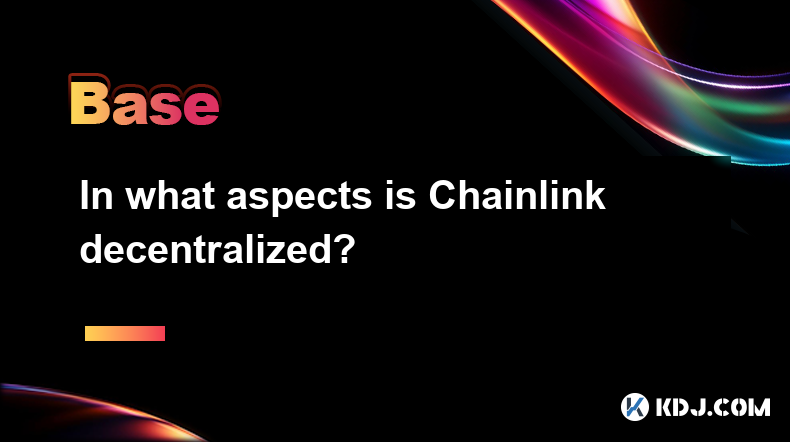
In what aspects is Chainlink decentralized?
Apr 02,2025 at 05:49pm
Chainlink is a decentralized oracle network that plays a crucial role in connecting smart contracts on blockchain networks with real-world data. Its decentralization is reflected in multiple aspects, ensuring the network's security, reliability, and integrity. This article delves into the various ways Chainlink achieves decentralization, including its n...

How does Chainlink connect smart contracts with real-world data?
Apr 02,2025 at 03:56pm
Chainlink is a decentralized oracle network that plays a crucial role in connecting smart contracts on blockchain platforms with real-world data. Smart contracts are self-executing contracts with the terms of the agreement directly written into code, but they can only interact with on-chain data. To access real-world data, such as stock prices, weather ...
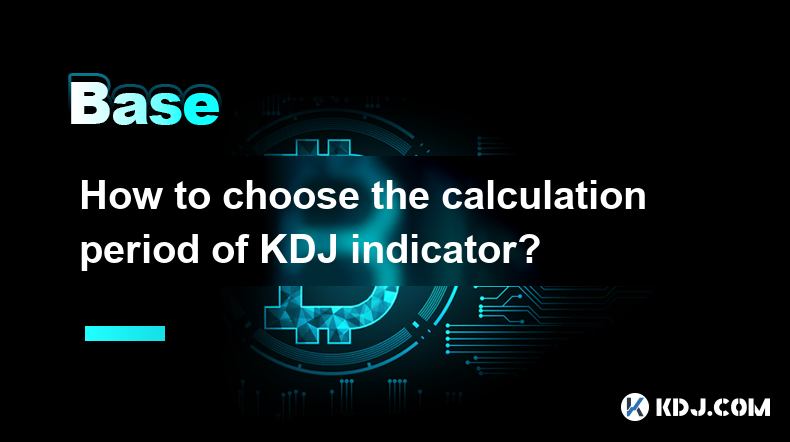
How to choose the calculation period of KDJ indicator?
Apr 02,2025 at 01:00pm
The KDJ indicator, also known as the Stochastic Oscillator, is a popular technical analysis tool used by cryptocurrency traders to identify potential buy and sell signals. The calculation period of the KDJ indicator is crucial in determining its effectiveness in predicting market trends. In this article, we will explore the factors to consider when choo...
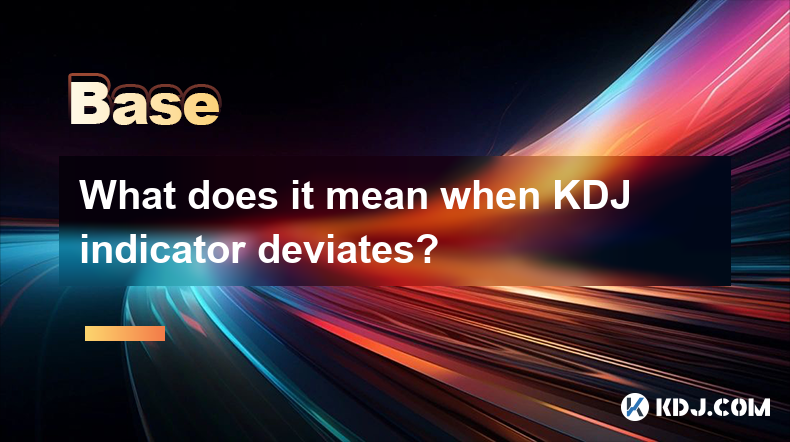
What does it mean when KDJ indicator deviates?
Apr 01,2025 at 03:08pm
The KDJ indicator, also known as the Stochastic Oscillator, is a popular technical analysis tool used in the cryptocurrency market to predict price movements. When the KDJ indicator deviates, it means that the current price of a cryptocurrency is moving away from its typical range, as indicated by the KDJ lines. This deviation can signal potential trend...
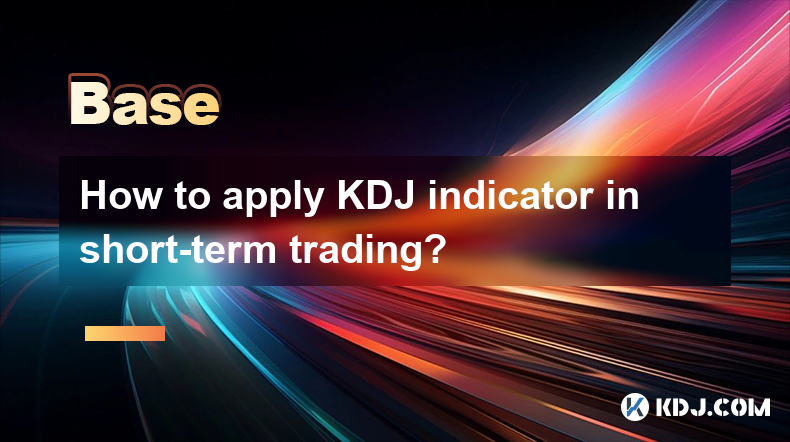
How to apply KDJ indicator in short-term trading?
Mar 31,2025 at 10:28pm
The KDJ indicator, also known as the Stochastic Oscillator, is a popular technical analysis tool used by traders to identify potential buy and sell signals in the cryptocurrency market. In short-term trading, the KDJ indicator can be particularly useful due to its sensitivity to price movements. This article will explore how to effectively apply the KDJ...
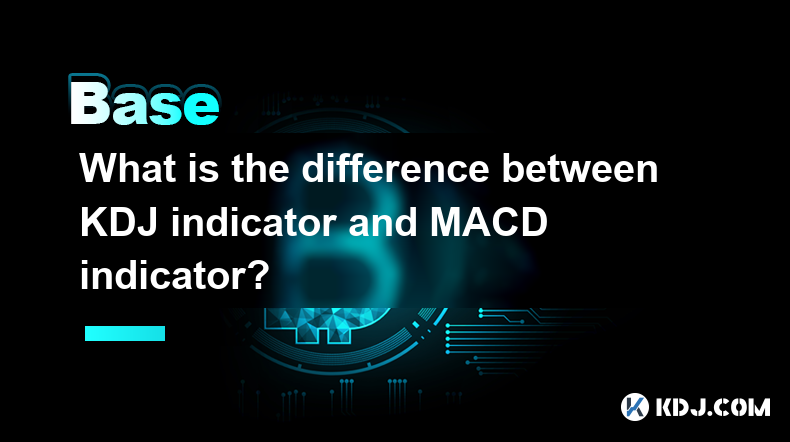
What is the difference between KDJ indicator and MACD indicator?
Apr 01,2025 at 08:21pm
The KDJ indicator and the MACD indicator are two popular technical analysis tools used by cryptocurrency traders to predict market trends and make informed trading decisions. While both indicators aim to help traders identify potential buy and sell signals, they differ in their construction, interpretation, and application. In this article, we will expl...

In what aspects is Chainlink decentralized?
Apr 02,2025 at 05:49pm
Chainlink is a decentralized oracle network that plays a crucial role in connecting smart contracts on blockchain networks with real-world data. Its decentralization is reflected in multiple aspects, ensuring the network's security, reliability, and integrity. This article delves into the various ways Chainlink achieves decentralization, including its n...

How does Chainlink connect smart contracts with real-world data?
Apr 02,2025 at 03:56pm
Chainlink is a decentralized oracle network that plays a crucial role in connecting smart contracts on blockchain platforms with real-world data. Smart contracts are self-executing contracts with the terms of the agreement directly written into code, but they can only interact with on-chain data. To access real-world data, such as stock prices, weather ...

How to choose the calculation period of KDJ indicator?
Apr 02,2025 at 01:00pm
The KDJ indicator, also known as the Stochastic Oscillator, is a popular technical analysis tool used by cryptocurrency traders to identify potential buy and sell signals. The calculation period of the KDJ indicator is crucial in determining its effectiveness in predicting market trends. In this article, we will explore the factors to consider when choo...

What does it mean when KDJ indicator deviates?
Apr 01,2025 at 03:08pm
The KDJ indicator, also known as the Stochastic Oscillator, is a popular technical analysis tool used in the cryptocurrency market to predict price movements. When the KDJ indicator deviates, it means that the current price of a cryptocurrency is moving away from its typical range, as indicated by the KDJ lines. This deviation can signal potential trend...

How to apply KDJ indicator in short-term trading?
Mar 31,2025 at 10:28pm
The KDJ indicator, also known as the Stochastic Oscillator, is a popular technical analysis tool used by traders to identify potential buy and sell signals in the cryptocurrency market. In short-term trading, the KDJ indicator can be particularly useful due to its sensitivity to price movements. This article will explore how to effectively apply the KDJ...

What is the difference between KDJ indicator and MACD indicator?
Apr 01,2025 at 08:21pm
The KDJ indicator and the MACD indicator are two popular technical analysis tools used by cryptocurrency traders to predict market trends and make informed trading decisions. While both indicators aim to help traders identify potential buy and sell signals, they differ in their construction, interpretation, and application. In this article, we will expl...
See all articles

























































































